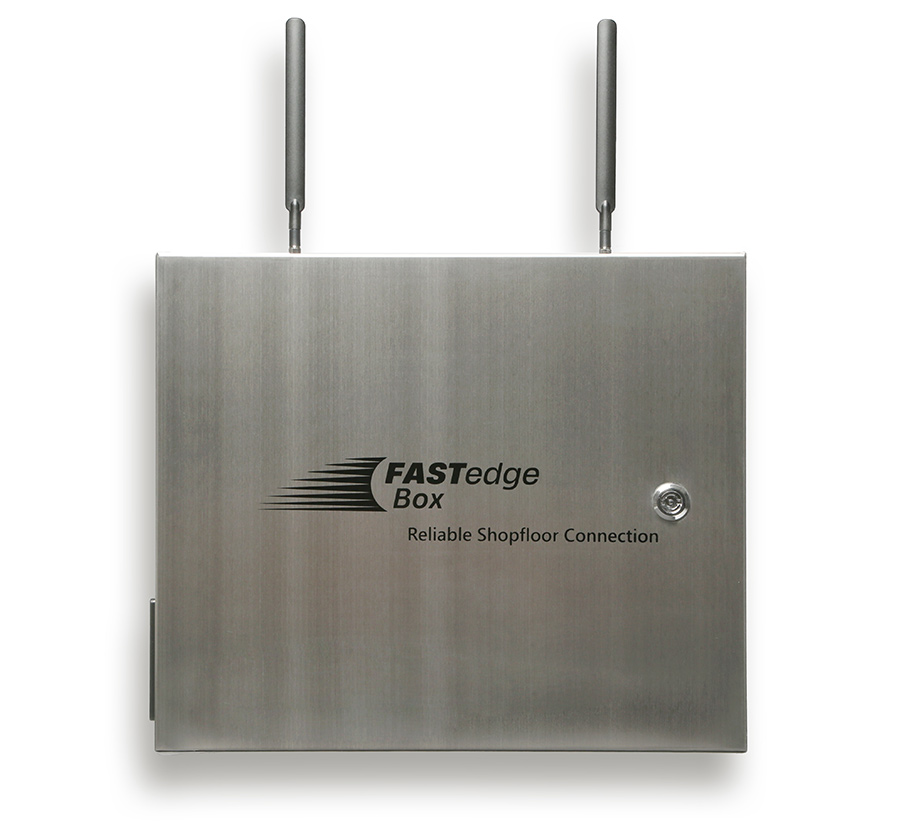Machine and Production Data Acquisition (MDA/PDA) simplifies many things in production: employees are able to focus more on other important tasks, transparency is created across departments and decisions can be made based on data. The first step in the implementation process is to calculate the costs and clarify the requirements on site in production. The extent to which data can be recorded automatically is crucial for the further course of the project. As a rule, MDA suppliers such as FASTEC do not find a so-called greenfield for new implementation at production companies, but in most cases a heterogeneous machine park, a so-called brownfield. The challenge here is to integrate machines from different years of manufacture into the MDA. Often, the prerequisites for automatic state reporting are missing, as old machines in particular are not yet connected to the network. In addition, many machines often have no machine connection options via the OPC UA interface, which standardizes access to machines in production and thus creates a manufacturer-independent data exchange.
Prior to starting, it is just as important what the company wants to achieve with the project. The main aim here is to gain insights from production that could not be captured by the previous manual recording process. In addition, digitalization means assistance for employees and the company can generally limit the use of paper.
It is recommended that employees are involved in the project right from the start. An MDA can serve as a vehicle for future improvements to machines and employees can see the benefits for themselves in their day-to-day work. After all, nothing is more motivating than a relaxed working day and a trouble-free shift.
Lars Knitter, Head of Sales & Marketing, authorized representative at FASTEC
How Much Automatically Captured Data Is Useful?
If a machine detects and reports a fault at the outfeed, for example, this can have a wide variety of causes: The outfeed is defective, a part has slipped and is blocking it or material is missing. The machine is now sending countless signals and it is not immediately clear what the main reason for the downtime is. Employees in production, on the other hand, can usually see directly why exactly the line is at a standstill and indicate the cause accordingly. This has another advantage: production can only be improved once the exact cause has been determined. Preventive measures immediately ensure that this disruption no longer occurs. Optimization projects can thus be initiated with employees: as they know the processes on site, they provide the necessary information. An MDA should not hinder employees in their day-to-day work, but rather help them. Compared to manual data acquisition, you no longer have to fill out forms or enter downtime manually.
Even if it is technically possible to automatically record machine states, the resulting information from the machine controls is usually not very informative. If there are no clear fault signals, an MDA supplier such as FASTEC must first work with the production company to understand the system and at the same time make the signals from the programmable logic controller (PLC) interpretable. Automatic state explanations are time-consuming. Instead, it is better if employees feed the state with additional information after the digital data acquisition.
Even Simple Machine Connections Enable a Successful MDA Project
Generally, it is associated with higher costs if companies want to implement a machine interface with many automatic state justifications. As already mentioned, MDA suppliers usually find that companies have a brownfield, i.e. heterogeneous machinery. MDA/PDA modules from the plant manufacturers are therefore often used to better interpret the signals. This results in external costs for OPC UA interfaces or a PLC retrofit as well as internal costs for processing and automation.
A machine interface with many automatic state justifications is technically possible, but must be carefully thought through in terms of costs and benefits.
Lars Knitter, Head of Sales & Marketing, authorized representative at FASTEC
It becomes clear: No complex machine interface is necessary for a successful MDA project start. Simple bindings and employee data already provide high-quality information for optimizing production.
In practice, a large number of projects have shown that a simple binding of the system via I/O modules provides a lot of valuable data at the beginning. Companies can reap the so-called “low hanging fruit” here. This initiates organizational improvements and gets employees on board.
Lars Knitter, Head of Sales & Marketing, authorized representative at FASTEC
As the project progresses, it makes sense to add automation and ultimately implement the last possible optimizations. OPEX – Operational Excellence – enables companies to increase efficiency in production on the basis of data. Through training and project support, they recognize potential and can leverage it.
Finally, the decisive factor is how to deal with the identified potential. The continuous improvement process (CIP) is considered to be the greatest challenge. Regular information and training of employees is a prerequisite for successful implementation. Lean managers who use an MDA on a daily basis as part of the CIP can make a significant contribution to the success of the project.
Don't Just Identify the Malfunction, Identify the Cause
User texts have proven to be best practice, especially in the early stages of a project. Here, employees have the opportunity to specify the exact cause of the malfunction. This provides much more informative states that help with optimization.
Our customers like to use the user texts or the digital shift log as a state justification to generate additional information in case of a downtime.
Lars Knitter, Head of Sales & Marketing, authorized representative at FASTEC
After a test period, it makes sense to specify what employees can select as the cause. This ensures that the results can still be evaluated.
In Summary, It Is Clear:
Employees provide the golden information to optimize the machinery. The important thing is to turn those involved, namely the machine managers, into stakeholders.
Lars Knitter, Head of Sales & Marketing, authorized representative at FASTEC
A simple machine connection together with their knowledge already makes it possible to optimize production. Even if automatic state justifications are technically possible, they have not proven to be advisable in practice at the start of a project. If a company wants to implement the final optimizations later on, automation can be added at a later stage.








